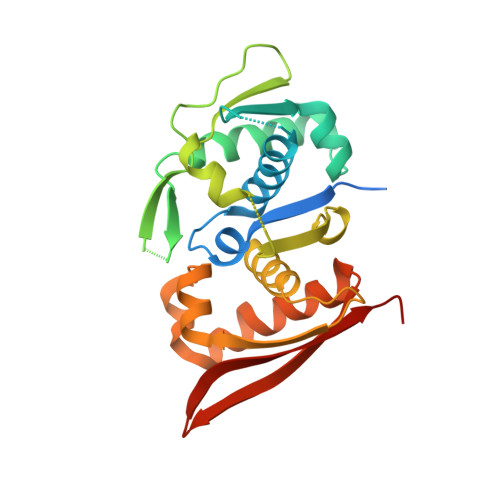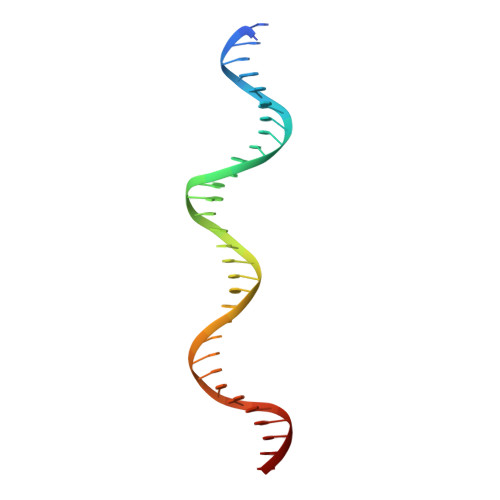Tuning Chemical DNA Ligation within DNA Crystals and Protein-DNA Cocrystals.
Orun, A.R., Slaughter, C.K., Shields, E.T., Vajapayajula, A., Jones, S., Shrestha, R., Snow, C.D.(2024) ACS Nanosci Au 4: 338-348
- PubMed: 39430379
- DOI: https://doi.org/10.1021/acsnanoscienceau.4c00013
- Primary Citation of Related Structures:
8TIP, 8TIQ, 8TIR, 8TIS, 8TIT, 8TIU, 8TIV, 8TIW, 8TIX, 8TIY, 8TIZ, 8TJ0, 8TJ1 - PubMed Abstract:
Biomolecular crystals can serve as materials for a plethora of applications including precise guest entrapment. However, as grown, biomolecular crystals are fragile in solutions other than their growth conditions. For crystals to achieve their full potential as hosts for other molecules, crystals can be made stronger with bioconjugation. Building on our previous work using carbodiimide 1-ethyl-3-(3-(dimethylamino)propyl)carbodiimide (EDC) for chemical ligation, here, we investigate DNA junction architecture through sticky base overhang lengths and the role of scaffold proteins in cross-linking within two classes of biomolecular crystals: cocrystals of DNA-binding proteins and pure DNA crystals. Both crystal classes contain DNA junctions where DNA strands stack up end-to-end. Ligation yields were studied as a function of sticky base overhang length and terminal phosphorylation status. The best ligation performance for both crystal classes was achieved with longer sticky overhangs and terminal 3'phosphates. Notably, EDC chemical ligation was achieved in crystals with pore sizes too small for intracrystal transport of ligase enzyme. Postassembly cross-linking produced dramatic stability improvements for both DNA crystals and cocrystals in water and blood serum. The results presented may help crystals containing DNA achieve broader application utility, including as structural biology scaffolds.
Organizational Affiliation:
Department of Chemistry, Colorado State University, Fort Collins, Colorado 80523, United States.

















